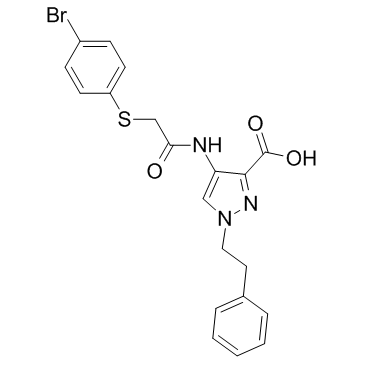| In Vivo |
Body weight changes of both sexes are not related to KR-33493 in all doses. In rats administrated KR-33493 for 4 weeks, no test article-related changes in any treated groups of either sex are found in hematology, serum biochemistry, and urinalysis. In dogs administrated KR-33493 for 2 weeks, red blood cell count (RBC) value in males is significantly higher at the 1000 mg/kg/day dose than that of the control group (i.e., 6.96±0.323 vs. 6.12±0.418). However, the change of RBC is recovered after the end of the administration period. The dose-normalized AUClast is not significantly different between the groups, suggesting that KR-33493 is governed by linear kinetics[1].
|
| Animal Admin |
A total of 93 male and 93 female specific pathogen-free rats (6 weeks of age), and 16 male and 16 female beagle dogs (8 months of age) are used in this study. In a toxicokinetic study, rat blood samples (approximately 0.6 mL) are collected into tubes containing heparin from the lateral tail vein at 0, 0.5, 1, 2, 4, 8, 12, and 24 h after dosing with KR-33493 at doses of 50, 150, and 500 mg/kg/day on Day 1 and Week 4. Dog blood samples (approximately 0.6 mL) are collected into tubes containing EDTA-2K from the cephalic vein at 0, 0.5, 1, 2, 4, 6, 8, and 24 h after dosing at KR-33493 doses of 50, 250, and 1000 mg/kg/day on Day 1 and Week 2. The plasma is separated by centrifugation (approximately 132,000 g, 3 min, 4°C) and stored at approximately -80°C until analysis. The KR-33493 concentration in plasma is quantified[1].
|
